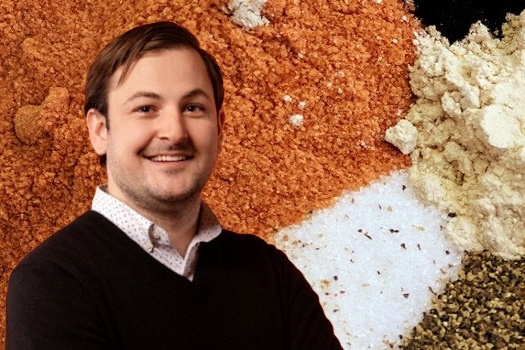
Cold brew coffee’s smooth taste, rich flavor and low acidity have made this trendy drink a global favorite no matter the weather. New research from the University of Georgia funded by the UGA Center for Food Safety looks into the possible food safety risk associated with cold brew coffee when it is contaminated with foodborne pathogens.
Thankfully, lovers of cold brew do not have to quit the drink or throw out their do-it-yourself cold brew pitchers, as UGA graduate research assistant Angela Parra has found that pathogenic bacteria, such as Salmonella, E. coli and Listeria monocytogenes, are unlikely to grow in cold brew coffee.
Parra, who works at the Center for Food Safety in the Department of Food Science and Technology, is testing this exact subject on the UGA Griffin campus.
Working with her advisor, Henk Den Bakker, a professor of food safety in College of Agricultural and Environmental Sciences, Parra has been inoculating cold brew coffee with different types of bacteria, such as Bacillus cereus, Listeria monocytogenes, E. coli and Salmonella.
“Specifically, I'm looking at the safety of cold brew and whether bacteria can grow in it. I’m also looking at other aspects, like how the quality of ingredients can impact the safety of the drink, temperature control during storage and what conditions allow for the growth of these potential pathogens,” Parra said.
The main reason that these dangerous bacteria may grow or survive in cold brew coffee is also one of the main benefits of the drink: low acidity.
Low acidity can be a good thing when it comes to coffee. If a person experiences heartburn, bloating, indigestion or other stomach issues after drinking a regular cup of coffee, it is more than likely the acidity of the coffee that is causing the issues. In a country where roughly 65% of the population drinks coffee by some estimates, low-acid alternatives have become a popular option.
Unfortunately, the acid and heat of coffee is what prevents pathogens like B. cereus and E. coli from growing in your coffee.
“The boiling water you use to make coffee kills most bacteria. That lack of boiling water in the preparation of cold brew, put together with the low acidity found in cold brew, allows for the potential growth or survival of those bacteria,” Parra explained.
However, lovers of cold brew do not have to quit the drink or throw out their do-it-yourself cold brew pitchers, as Parra has not found that the bacteria will grow in cold brew if it is not already present.

“During my survival studies, at no point has the bacteria grown in cold brew. However, the pathogens have all survived within the coffee anywhere from nine to 12 days. B. cereus has been the most persistent, surviving over 30 days. Unfortunately, there is only a slight decline in bacterial counts in the days leading up to the complete inactivation of these pathogens — meaning fresh cold brew can still make you sick if enough bacteria were present at the time it was brewed,” Parra said.
In other words, if brewed and stored in a refrigerator for a limited time, cold brew coffee is unlikely to spoil and support the growth bacteria that will make you sick. Contamination occurs during the process of brewing the coffee, such as contaminated ingredients or an unsanitary brewing environment — think an unclean coffee pot or unwashed hands.
Preventing contamination of cold brew coffee is an easy feat. If brewed at home, make sure to wash your hands and all the equipment being used, and remember that cold brew coffee is safest stored in the refrigerator.
Parra, who makes her own cold brew at home, encourages others to give it a try, but safely, sanitizing hands and equipment.
“It will give you a less acidic version of your favorite roast which, in my opinion, gives a smoother taste. I played a ton with the ratios until I found the one I liked,” she said.
Learn more about the research being conducted in the food science and technology department at foodscience.caes.uga.edu/research.






